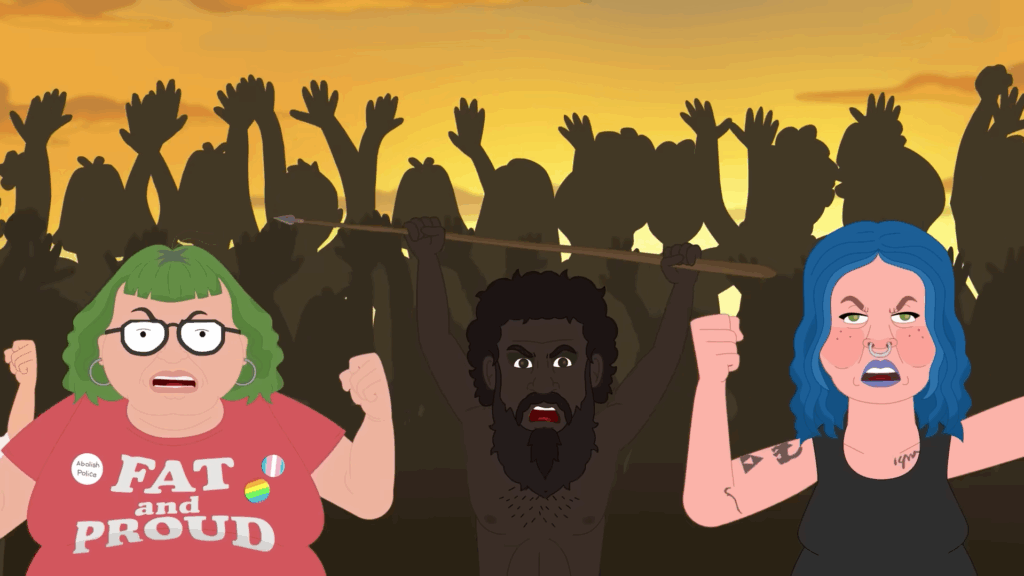Stereotpyes are useful tools to help us navigate the world. They help us transform abstract notions into predictable realities. When someone refers to a dog, we all have some sort of a stereotypical image of a dog that we conjure – that is a stereotype. Or when we think of a mother, we most certainly associate that word with things like caring, feeding, and similar positive ideas.
Naturally, stereotypes are not precise or perfect. Not all dogs are friendly and not all mothers are caring. They are generalisations that focus on the most typical or constant elements of whatever they refer to. Often, in the case of ethnic stereotypes, for instance, they may be outdated or are clearly not applicable to the majority of the individuals who belong to that given ethnic community. But all stereotypes, whether they are negative or positive, have at least a kernel of truth, otherwise they would not exist.
For instance, it is probably safe to say that most people still think of Germans as precise and disciplined, but it is highly unlikely that the first adjective that pops to mind when hearing the word German would be “romantic” or “passionate”. Is it true that all Germans or all Japanese are precise, disciplined and hard-working? Obviously not, but it is not by chance that many prefer German or Japanese-made cars for instance for reliability. Are all Italians Latin lovers, who eat pizza and pasta every day and who sing opera airs before they sip their coffee corrected with grappa? No, but these attributes are much more likely to fit an Italian than, say, a Slovak. Not all Scots or Dutch are misers, but it is perhaps fair to say they are more likely to be frugal than a Hungarian.
Of course, there is a narrow line between prejudices and stereotypes, so any use of ethnic stereotypes in the public space, and especially in the media and film industry is tricky, as while they help audiences identify and relate to the people portrayed, the question arises: is it a good idea to reinforce and perpetuate stereotpyes, and thus even strengthen prejudices as a consequence?
While the answer to the above question is obviously no, it is a much discussed topic in the western world whether there is indeed a requirement, or rather expectation, in all matters, to be colour-blind, and if yes, how it should be applied to criminology and crime reporting.
It often leads to the feeling among the majority population that the police and the media are in fact trying to mask reality
In Hungary, for a number of reasons, the ethnic or racial background of neither perpetrators nor victims is reported. The police do not release that type of information and the press does not report on it. This is essentially a good practice, except it often leads to the feeling among the majority population that the police and the media are in fact trying to mask reality. There are certain types of crimes that are associated with certain groups, so readers or viewers make automatic and stereotypical guesses about the background of the criminals. The practice also gives rise to coded language when the perpetrators are Roma. One does not have to be a nuclear scientist to decipher sentences in police statements that are something to the effect of “Two families clashed with machetes at a petrol station” or “The members of the prostitution ring, XY, his brother YY and his sister-in-law XX” did this or that. In addition, because of strict Hungarian laws protecting personality rights, only the initials of those charged with a crime can be made public before a conviction, so there is no possibility of people drawing conclusions on the basis of the surnames of criminals. But of course there are ways to circumvent that. What I have observed is one left-leaning website for instance invariably tasks a reporter with a Roma-sounding surname to report on crimes that one can presume were committed by people of Roma ethnicity – coded messaging again.
In other countries it is common practice to reveal the racial or ethnic identity of perpetrators. It is much less common, however, to make public the background of the victims. And this is very much so when it comes to black-on-white or black-on-black crime, particularly in America, but in other countries as well, including Hungary, where black and white would translate as Roma and non-Roma. The issue with that practice is obvious: white or non-Roma people feel that their ethnicity is only highlighted when the perpetrator is white, which actually promotes the sterotypical, negative idea of white supremacy.
Plenty has been written by conservatives about the fact that the film industry has gone woke recently. The appearance of racially diverse characters of various sexual orientations and gender identities is a natural and, in fact, a mostly welcome development, as people of that background were conspicuously absent before. What I see as disturbing, however, is the tendency to cram such characters galore into films, and, in addition, to make them always the good guys. It is only a slight exaggeration when I say that a lesbian these days is always morally superior to a heterosexual woman in streaming services’ mass products, a person of colour to a white one and so on.
The ultimate wokeness, however, is what I have just recently come across in a UK mini-series and what I have dubbed the “fabrication of stereotypes.” In this particular film, there is a subplot of a foreign prostitute in London who is beaten up so badly by her pimp that she eventually dies in hospital. A terrible, but unfortunately not so rare phenomenon, at least as far as the presence of sex workers coming especially from Eastern Europe and they’re being exploited and abused by their procurers is concerned. However, guess what the name of the pimp in the film is? László Kovács. A stereotypically Hungarian, non-Roma surname, to make sure the message gets across. His victim, the prostitute (white herself) happens to be called Cosmina Baicu, an easily recognizable (non-Roma) Romanian name. Well, there are quite a lot of studies and investigative pieces about the massive prostitution of mostly disadvantaged Hungarian women in Western Europe, with some estimating that they make up some one-fifth of all sex workers there. And, clearly, almost all of these women have pimps. But there are also plenty of reports about the fact that a substantial part of sex workers from Eastern Europe are of Roma origin, many being recruited straight from state orphanages when still underage. Among their pimps, Roma men are also overrepresented, who sometimes make their own relatives work as prostitutes. In addition, it is rather unlikely or at least very unusual that a Hungarian pimp would prostitute a non-Roma Romanian woman, simply because local (I mean Hungarian) girls are much more easily available. So, László Kovács is an evil white man who beats the (white) Romanian victim. But of course, reality and common knowledge do not matter when an agenda is being promoted with noble lies.
The ultimate wokeness is what I have just recently come across in a UK mini-series and what I have dubbed the “fabrication of stereotypes”







